INTRODUCTION
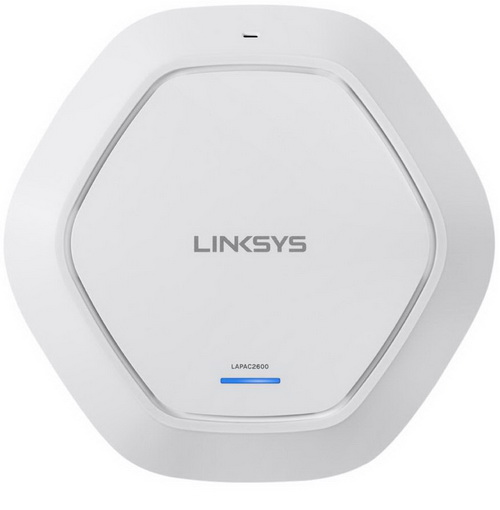
I don't know if you've noticed but whenever a discussion is all about WiFi signal strength modem/routers and repeaters/range extenders are the very two device types that come to mind. This has actually happened quite a few times not only here in the office/lab but also when I’m out with friends and family and so we all decided it would be nice if we could "illustrate" that access points are just as useful (if not more) as repeaters/range extenders (even compared to modem/routers depending on the situation). Sure we mostly see access points used in consumer/public areas like hotels, shopping malls, cafeterias and restaurants but they are also very widely used in large offices and corporations. The most powerful access point in Linksys's arsenal is the LAPAC2600 AC2600 Dual-Band MU-MIMO model and that's what we have on our test bench today.
The Linksys brand has pioneered wireless connectivity since its inception in 1988 with its leading innovation and engineering strategies, and best-in-class networking technology, design, and customer service. Linksys enables a connected lifestyle for people at home, at work and on the move, and with its award-winning products, simplifies home control, entertainment, security and Internet access through innovative features and a growing application and partner ecosystem.
The LAPAC2600 AC2600 Dual-Band MU-MIMO model by Linksys is among the most advanced access points in the market today and just like all similar devices it's part of their business pro line of products. The LAPAC2600 actually already counts over a year in the market but since Linksys equipped it with the best technologies at launch it still has almost nothing to be jealous when compared to all the latest models. So in order to make the LAPAC2600 one of the best access points available to date Linksys gave it support for many technologies including MU-MIMO (Multi-user, multiple-input, multiple-output technology - allows a Wi-Fi router to communicate with multiple devices simultaneously), Beamforming (directs wireless signal to were connecte devices are at), 802.11r and 802.11k standards (enables 802.11r-enabled client devices to roam between access point with minimal dropped packets thus enabling uninterrupted VoIP calls or video calls), clustering (single point control - can control many access points at the same time), captive portal (customized guest WiFi access forwarding people to a web page for verification - mostly found in cafeterias and hotels), 802.3at PoE+ (Power Over Ethernet Plus - eliminates the need for extra power adapters) and 802.1x with remote authentication Dial-In user service (RADIUS). Under the hood of the LAPAC2600 Linksys placed the IPQ8065 quad-core network processor by Qualcomm (combines a dual-core Krait™ CPU @ 1.7GHz and a dual-core 800MHz Network Subsystem), QCA9990 Wave-2 802.11ac radio with 4x4 high-gain (4.4/5.2dBi) dual-band internal antennas which offer concurrent signal output on both the 2.4GHz (up to 800Mbps) and 5GHz bands (up to 1733Mbps) and dual RJ45 Gigabit Ethernet ports (support link aggregation up to up to 2Gbps).
SPECIFICATIONS AND FEATURES

PACKAGING AND CONTENTS
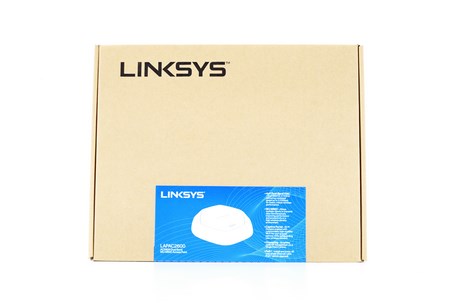
 Just like their Business Routers the LAPAC2600 arrived inside a plain cardboard box that just has a small sticker at the top and front with the products serial number, barcodes and main specs.
Just like their Business Routers the LAPAC2600 arrived inside a plain cardboard box that just has a small sticker at the top and front with the products serial number, barcodes and main specs.
The entire bundle is kept secure with the help of a formed piece of cardboard.
 Along with the LAPAC2600 Access Point you will also get a power adapter with both EU and UK plugs, Ethernet cable, wall/ceiling mount brackets, two small plastic bags with screws, drilling layout template, software CD and a quick start guide.
Along with the LAPAC2600 Access Point you will also get a power adapter with both EU and UK plugs, Ethernet cable, wall/ceiling mount brackets, two small plastic bags with screws, drilling layout template, software CD and a quick start guide.
THE LAPAC2600
Just like most access points in the market today the 236mm wide, 243mm long and 43mm thick enclosure of the LAPAC2600 is made out of plastic and only comes in white.
 To showcase the size of the LAPAC2600 we placed it right next to the Archer C5400 router by TP-Link (review soon).
To showcase the size of the LAPAC2600 we placed it right next to the Archer C5400 router by TP-Link (review soon).
A blue activity LED is placed at the top of the LAPAC2600.


The base of the device is mostly perforated and also has the two RJ45 Ethernet ports (only one supports PoE+), reset button and the DC in.


We decided to open the enclosure to see exactly what's beneath it and the first thing we saw were the 4x4 high-gain antennas for both bands.
We dag a little bit deeper but unfortunately all of the modules featured aluminum covers which we didn't want to risk removing.
WEB INTERFACE PART 1
Prior to using the device i strongly recommend heading over to the official Linksys support page to download the latest firmware version and update the device with it.



The first tab once you enter the web interface of the LAPAC2600 is the system tab which includes a quick summary/state of the device, VLAN/LAN status, wireless signal and client status (SSID name, connected devices and MAC addresses), statistics and logs.
From the quick start tab you can launch the setup wizard which will take you through some very basic configuration settings.
The configuration tab has the most sub-tabs so from the Administration one you can add/remove user accounts, set the time, adjust log settings, configure management access, use an SSL certificate and you can even disable the activity LED (useful in public areas where you don't want the access point to stand out).


Through the LAN sub-tab the end user can adjust the VLAN/LAN settings, configure the speed of the Ethernet ports and setup their security and discovery options.










Within the wireless sub-tab you can enable/disable either of the two bands, use total of 8 SSID's for each, choose the preferred security method, enable/disable Rogue AP detection (for unauthorized access points), schedule when you want people to have access to the wireless bands, place rate limits on any of the available SSID's, enable/disable QoS again for any of the SSID's (quality of service), enable spanning tree mode (prevents bridge loops) and setup the WDS feature (wireless distribution system), enable/disable workgroup bridge mode and finally you can also enable/disable more advanced features like isolation between SSID's, MU-MIMMO, Beamforming, Worldwide mode and output power.
WEB INTERFACE PART 2
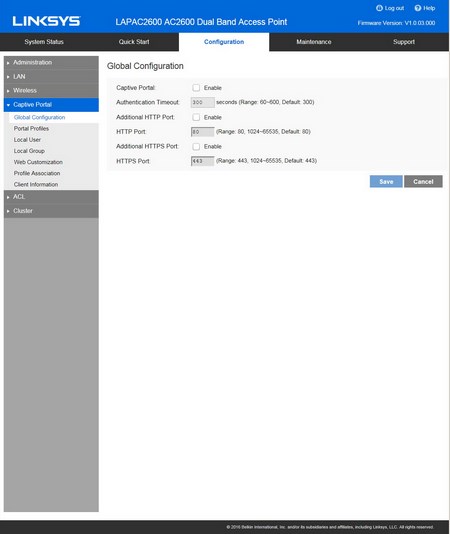


How many times have you tried logging into the WiFi of a cafeteria or a hotel only to be redirected to a website asking for your information? This is basically what the captive portal sub-tab does.

You can add access control list rules and associations from within the ACL sub-tab while the cluster feature (single control over all connected access points) can be adjusted from the cluster sub-tab.




As expected from the maintenance tab you can perform firmware updates, copy/save and backup/restore the current device configuration, reset all settings to their factory defaults, reboot the access point and perform diagnostics.
TESTING METHODOLOGY
For access points and repeaters/range extenders we will be using part of the same testing methodology as we do for modem/routers so once again we will be using the networking benchmark software by Passmark (v.8), QCheck software by Ixia and ATTO v2.47 (since April 2015) to test wireless signal strength and quality. Both our systems are outfitted with Kingston HyperX Predator 480GB PCIe SSDs, AC1200 USB 3.0 adapters (we received AC1900 models but so far our results have been somewhat inconclusive in order to replace our AC1200 with them) and CAT7 cables and are placed 15m away from the router with 3 concrete walls between them while each test is repeated a total of 6 times after which the average scores are recorded into our charts. Both systems are running a fresh installation of Windows 10 Pro complete with all updates until the 18th of December 2017.
Also just like with modem/routers we will also be testing the power consumption of access points and repeaters/range extenders (average power consumption during tests is placed in our charts).
TEST RESULTS
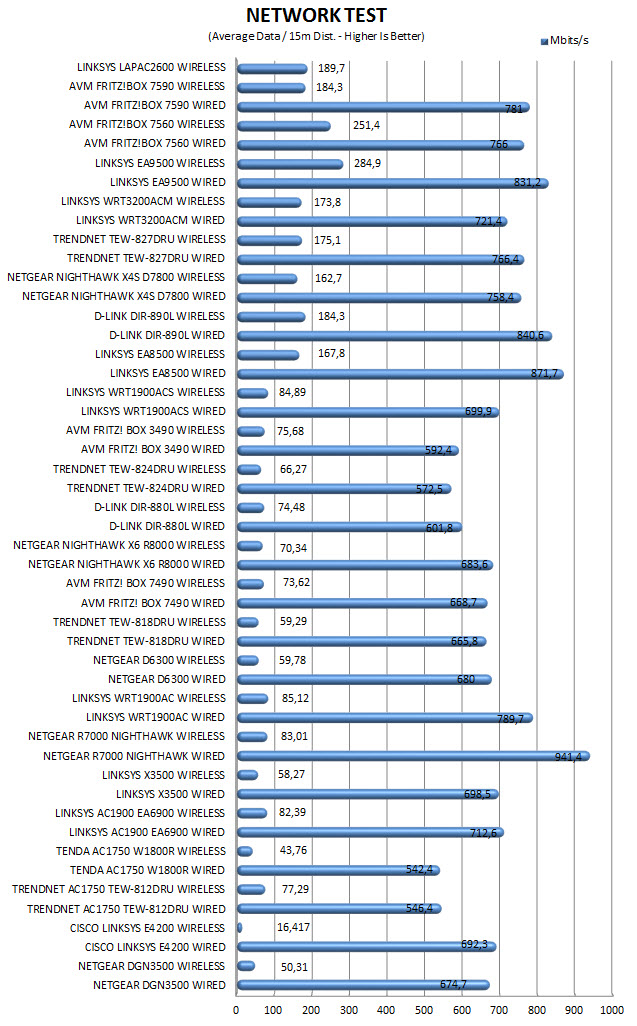



CONCLUSION

Access points may not offer the wealth of available features most high-end modem/routers do but at the end of the day they don’t have to. Instead they have but two primary goals to offer superior signal strength and security to people using it. Now as you can see from our tests the LAPAC2600 did extremely well especially if you take into account that we place it on the exact same location we place modem/routers so since access points are usually locate don ceilings and walls they can actually be much closer to people than a modem/router (thus they can offer even better wireless performance). On the other hand in terms of security both thanks to all the available network encryption standards, the captive portal feature and the 802.1x / RADIUS support it should have even the most demanding users covered for a long time. PoE+ support is also a great feature since it reduces the number of wires and time needed to install the LAPAC2600 but to do so you will need a compatible PoE(+) switch (or a PoE injector) something which most offices, cafeterias and corporations probably already have. Power consumption was also very low and although Linksys reports a maximum of 24W by using up to 4 devices with the LAPAC2600 we never crossed the 10W mark (with 20 or more the number provided by Linksys could be right on the spot). We do feel however that the LAPAC2600 lacks two features we’d like to see and those are support for external antennas and availability in other colors such as black. External antennas is not something we see used often but they can increase wireless range (and improve signal strength) while availability in different colors (although not really a con) would make it easier for any interested party to use the LAPAC2600 (not all building interiors are painted white).
Business class products offer improved performance, superior quality and far better product support compared to consumer ones so naturally an serious gap in price between the two is always expected. With that in mind the current price tag of USD330 inside the USA (Amazon.com) and 375Euros inside the EU (Amazon.co.uk) Linksys asks for the LAPAC2600 is somewhat justified especially since you will have a really hard time finding an equally good ceiling/wall mounted access point. Now of course a business class device doesn’t belong in most households but if you happen to be looking for one regardless of the where you want to use it and performance is among your top priorities then you can’t go wrong with the LAPAC2600 Access Point by Linksys an that’s why it gets our Golden Award.

PROS
- Build Quality
- Wireless Performance
- AC2600 Technology (Concurrent 802.11n & 802.11ac)
- Features (Beamforming, MU-MIMO, Clustering, Captive Portal, 802.1x)
- 4 High Gain Antennas
- Plethora Of Settings
- Dual RJ45 Ethernet Ports (Support Link Aggregation)
- PoE+ Compatible
CONS
- Price (For Some)
- Lacks Support For External Antennas

 O-Sense
O-Sense






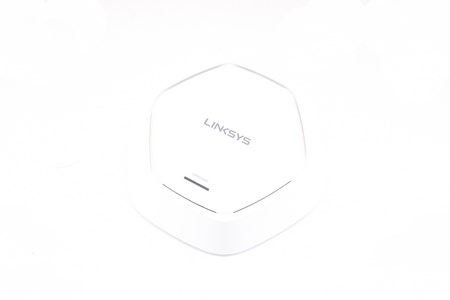


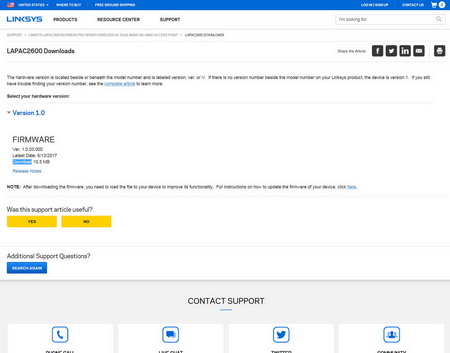






.png)

